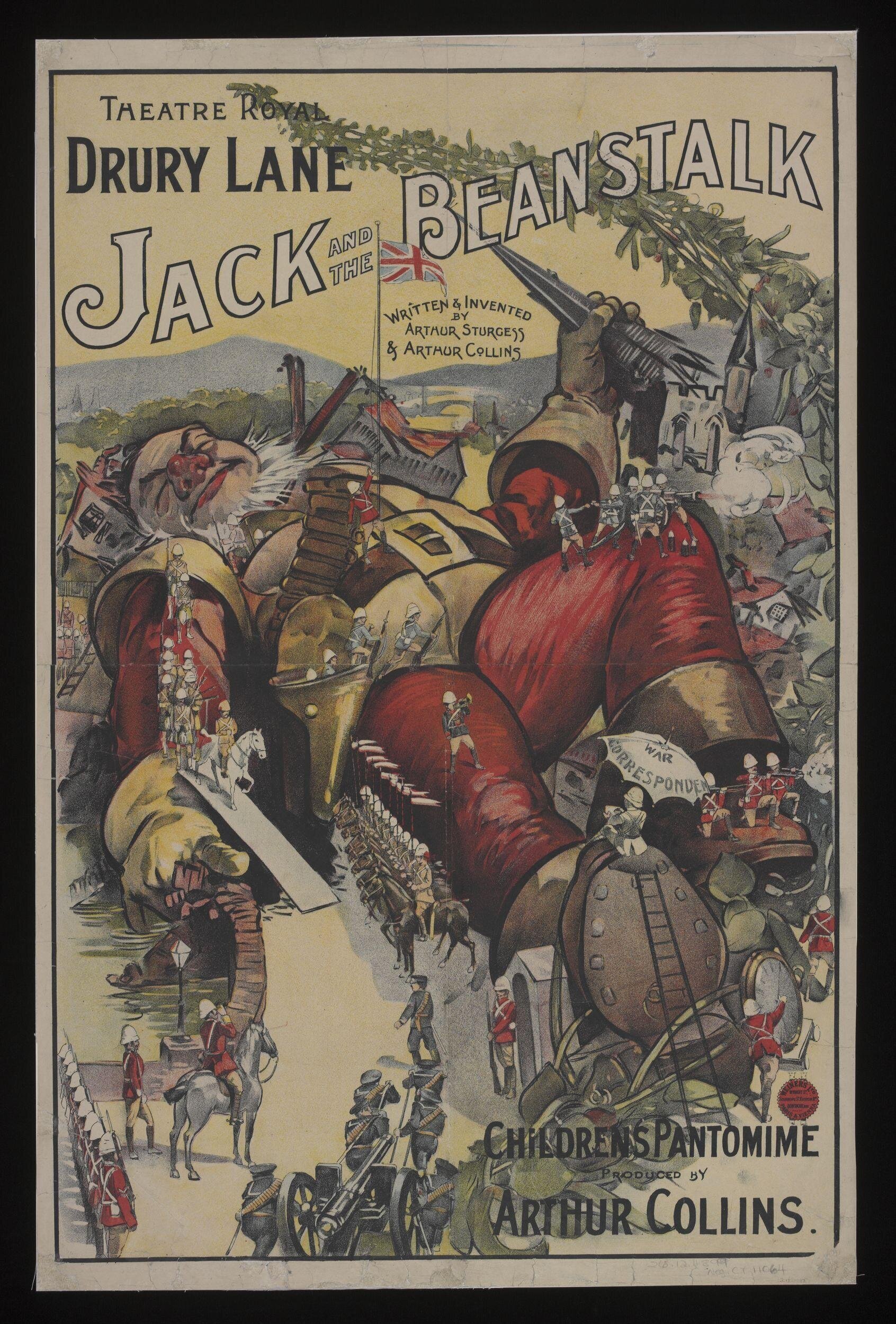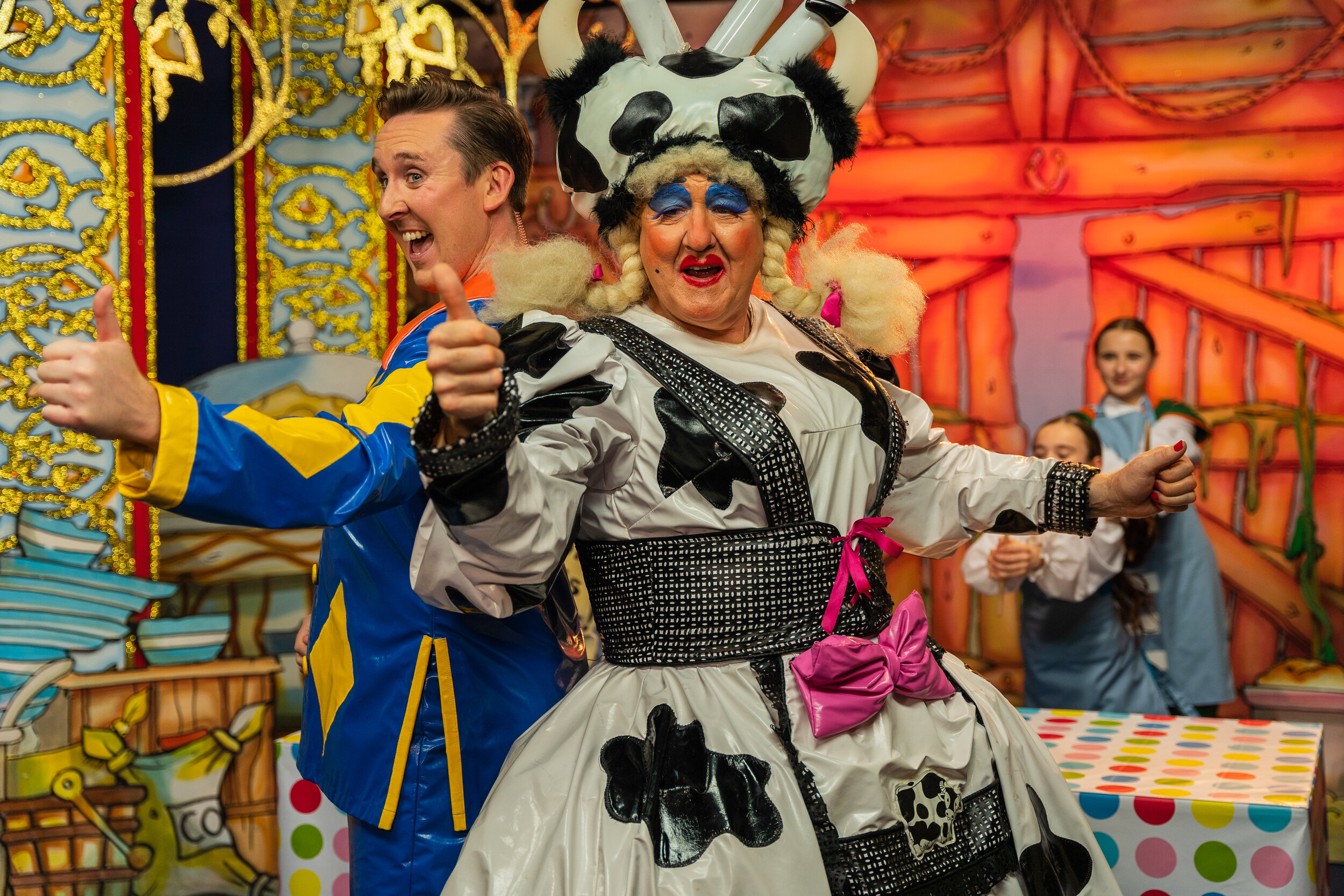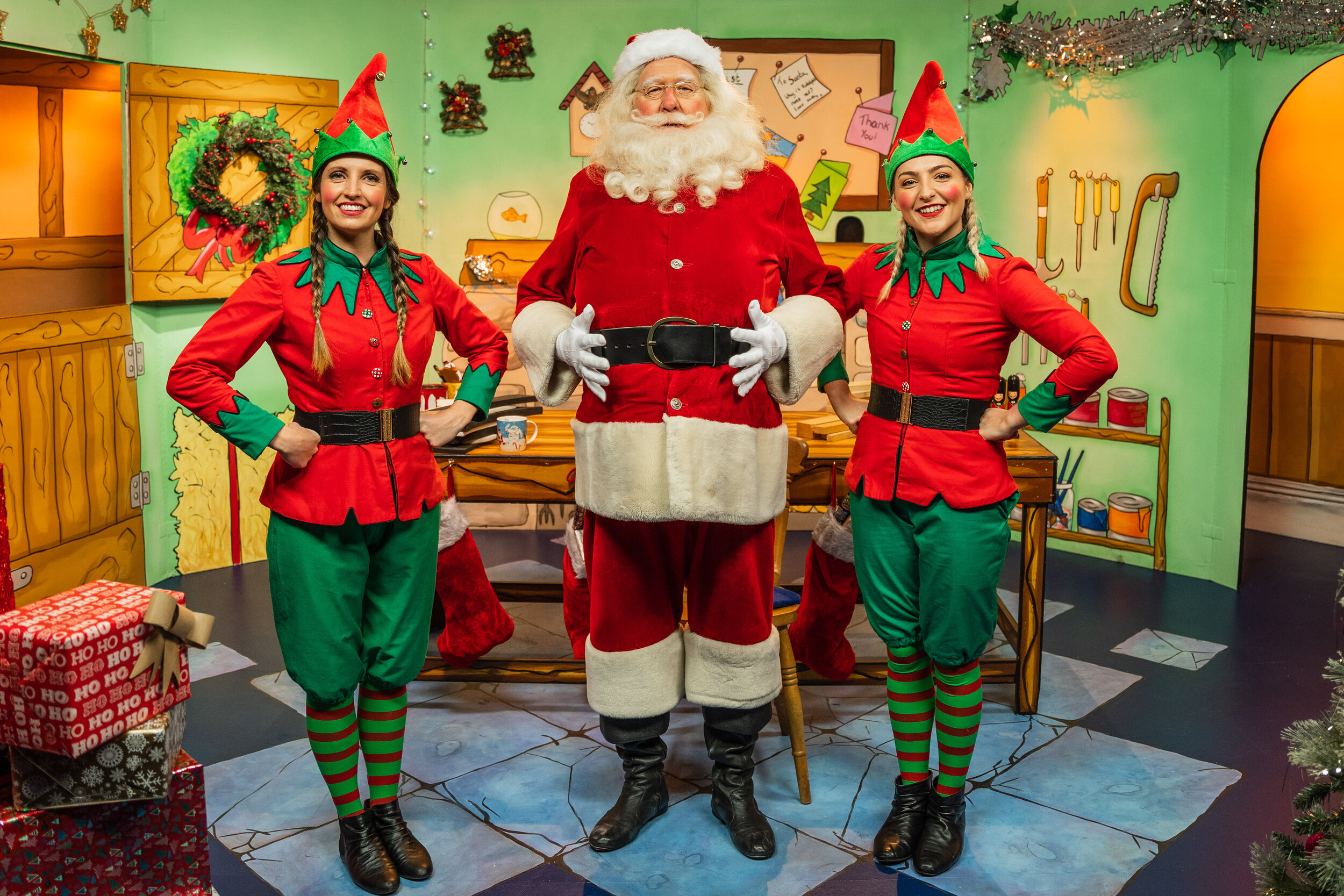Looking Back
We at Imagine, like so many others, will always remember 16th March 2020. It took just 10 words.
“public venues such as theatres should no longer be visited”
That was it. Our industry closed, and we were in limbo.
Steve and I had been to the theatre just 2 days before, enjoying a performance of ‘Once’ at the Belgrade Theatre, Coventry. That, and so many other tours and West End productions ground to an immediate halt. The instruction to close, whilst not a surprise, came quicker than expected. Sets were left on empty stages, unplayed music sat on music stands in empty pits, unworn costumes lay abandoned in dressing rooms, and front of house merchandise points remained fully stocked still waiting for their customers.
The brilliant Nina Dunn, who just 3 months before had been creating the graphics for our magical digital production of Cinderella at Fairfield Halls, took a series of poignant photos of abandoned theatres to ensure that this pause in the theatre world was forever captured.
At Imagine, our own 2020 pantomime season, which was full steam ahead in its planning was thrown up in the air. We heard lots of statements along the lines of
“we’ll be back open soon”
“It’ll be a couple of months hiatus”
“This can’t go on for long, can it?”
We wrote a series of blogs last year about how it felt to be a pantomime producer in a pandemic, why we were on the verge of having to cancel our 2020 pantomime season, and finally what it felt like to make the final call and postpone our entire portfolio of shows by 12 months, all of which are on our website. The unthinkable had become reality.
365 days on
Here we are, almost a full year on, and apart from a few productions which managed to get up on their feet before having to close again, there has been very limited amounts of theatre in the UK for 12 months. What was once a completely unimaginable situation is about to reach its first anniversary since closure. It has been a tough year full of frustration, financial hardship and worry for so many.
It’s one year for theatres themselves, but also one year for those individuals and businesses who work in and are the backbone of the theatre industry. Theatres are not just a place of entertainment. They are a part of the local community, a place to belong and escape, and for countless thousands, a place of work.
The majority of those who work in theatre are freelancers, and they make up a very significant number of the “Forgotten 3 million’ who have not been able to claim furlough and have had no or limited help from the Self-Employed Income Support Scheme. The March 2021 budget has hopefully enabled an increase in the number able to access the SEISS but there are will still many who are excluded.
The hardest thing throughout this whole pandemic has been our inability to create jobs for those who would normally work on our shows, in addition to not being able to entertain hundreds of thousands of people.
Light at the end of the tunnel – a roadmap for England
What is positive, is there is light at the end of the tunnel after a very long 12 months. We now have a roadmap for reopening which is a huge step forward in the right direction. In England, it is Step 3 (no sooner than 17th May) for reopening with social distancing, and Step 4 (no sooner than 21st June) without social distancing. (At the time of writing, rules are yet to be issued for Scotland, Wales and Northern Ireland.) These are such promising headlines, but as always, the devil is in the detail of the actual roadmap. It’s never as straightforward as the headlines would have you believe!
The roadmap for England is a fabulous set of guidelines driving us towards our end goal – but that’s what it is, it’s guidelines as to how we MIGHT get our industry fully reopened by 21st June. The language for Step 4 and the reopening of live events without social distancing is hopeful rather than guaranteed. The roadmap is scattered with language such as “we aim to”, “we hope to” and steps as to how things “might” happen. Indeed Step 4 is caveated with ‘this is all subject to change’.
We know the success of the vaccination rollout is surpassing everyone’s expectations, but while being optimistic we are also realistic to the mountain we must climb to firstly get theatres reopened, and then to remove social distancing. We know that all mountains are climbable; the question is how quickly and how safely?
The roadmap for England states there are 4 tests we must undertake to move to step 4. These are (source England’s COVID roadmap published 22nd February 2020 pages 40 - 43)
COVID status certification - This involves using testing and vaccination data.
Large Events – Which states the DCMS “have been working with representatives from industry and civil society to explore when and how events with larger crowd sizes, less social distancing or in settings where transmission is more likely (i.e. indoors), will be able to return safely.“ There will be pilots starting in April 2021
International Travel – There is much detail around testing and vaccinations in this section to reopen travel.
Social Distancing - Review as to when it might be removed along with other mitigations such as mask wearing
Producers and Venues – a finely honed eco-system
There is no doubt that there is massive ambition within both the venue and producing communities to get venues open and productions back up and running. But there are also things that we must consider when making decisions about when the right time is to get things moving. Venues and producers are like a finely honed ecosystem. Venues need product to put on their stage; producers need venues to put on their productions. We can’t have one without the other.
For venues, sadly many have had no option but to undertake a programme of redundancies over the past year. Many find themselves with less than half the number of staff they need to function, meaning that they will need to undertake a big recruitment drive to reopen. Recruitment on that scale doesn’t happen overnight. It requires considerable investment BEFORE a venue is ready to reopen and take its first show back in, but many are not currently in a strong enough financial position to be able to re-recruit. The catch-22 is that they need shows to come through the doors, bringing income back into buildings to be able to afford to do it.
Producers like us need lead time to our shows. A pantomime season takes 16 months of upfront work to prepare for opening. UK wide tours of large musicals and plays can take even longer from first planning through to opening night. So, time is already ticking but we still don’t quite have the full clarity that we need, even with a roadmap. Things like
Can we move a show from venue to venue with only 1 days gap, or do we need to wait 3 days following COVID safety guidelines?
How often does testing need to happen within companies, and who is paying for it?
What happens if a cast member is unwell so goes home and then subsequently tests positive? Does the whole show have to close or just that one person stay off sick in isolation?
There are so many unanswered questions that need to be understood before a commitment to produce a show can be undertaken.
Venues need a minimum volume of shows going through their building to be able to reopen. Producers need the confidence buildings are going to reopen to risk their investments on shows. If there isn’t enough product on the touring circuit, it’s not financially viable for venues to reopen, and the producers have nowhere to stage their shows.
So, the big question for producers and venues alike is ‘how confident are we that 17th May and 21st June are achievable and realistic?’. As we said, there is a huge amount of positivity and optimism around reopening, but also reality and caution around the risks involved from all sides.
It’s actually easier to get a ‘resident’ show up and running right now than a touring show. By ‘resident’ we mean a show that lives in a single venue such as West End productions or a pantomime. They are created for one theatre, and once open they stay where they are. Nothing is moved from that location and there is no risk of cross contamination from touring. They rely on just one venue to be open rather than a series of them.
For regional theatre which tours around the UK, such as the big musical tours, there are many more logistics to be considered. Each show tends to move each week, meaning that there is a potential contamination issue. Also, they will be booked into many venues over a period of time rather than just one, and there is no guarantee that all of those venues will be reopened at the same time. Indeed, most tours travel the 4 countries of the United Kingdom and at the time of writing, we don’t have clarity as to what the rules of each individual country are. This may leave gaps in the schedule. Gaps may mean that a production is no longer financially viable. If a venue starts to lose productions, it may no longer be viable to keep the venue open.
As we said, a very finely tuned eco system with all parties reliant on each other to stay open and viable. It’s almost the perfect storm!
Considerations
Throughout all of this, we have not considered what the medical and scientific data is saying about the virus. We know that, thanks to the vaccination programme, we are expecting to see COVID move from pandemic to endemic – something we will learn to manage to live with rather than the global crisis we face currently, but at what speed and with what long term measures?
There is still little clarity regarding testing and “COVID status certification” and what that means for theatre audiences. Do we have to test everyone before they can come into the auditorium? Will the Government introduce vaccine passports? Will theatres be able to remove all mitigations such as mask wearing? Lots of questions to be answered, and the planned pilots will help us in our understanding of this.
It is also critical we consider the wellbeing of those working on and involved in productions. This may involve some kind of ‘bubbles’ or bi-weekly testing regimes to ensure wellbeing and safety. We cannot ignore the real and present risk a production may need to close for 10 days if a positive case is found in the cast. For a production with a short run, as well as the health and wellbeing considerations for those working on the production, this could be financially catastrophic for producers and venues.
At present, there is a huge question over insurances for productions. Will there be any form of government support or insurance available to underwrite any potential losses for productions which must close either due to COVID cases, or if there are any future government lockdowns whether local or national? Whilst we know the vaccine will reduce cases and hospitalisations, we do not yet know what will happen over the winter of 2021 along with any variants which may cause a spike in cases. Insurance is a critical consideration within our planning.
We know that audiences will potentially behave very differently from the past. We are expecting to see audiences broadly falling into the following groups:
Those who cannot wait to get back and want to be back in their seats NOW. Theatre’s return can’t come quickly enough
Those who want to come but are a little nervous so want to wait a few months to see how things go before making a decision
Those who may choose never to return, for personal or health reasons.
Those whose finances have been affected and who want to return but at present may face affordability challenges.
Therefore, so much also depends on the confidence of our audiences and the appetite to book.
One year on, the theatre industry finally has a vision of how it can restart and rebuild. But it’s not quite a simple as ‘we can reopen on 17th May’. To get there safely, from both a health and financial perspective, there are so many questions we have to answer first.
That’s what we’ll be spending the next few months doing.
Stay safe and well.
Sarah and Steve x











































